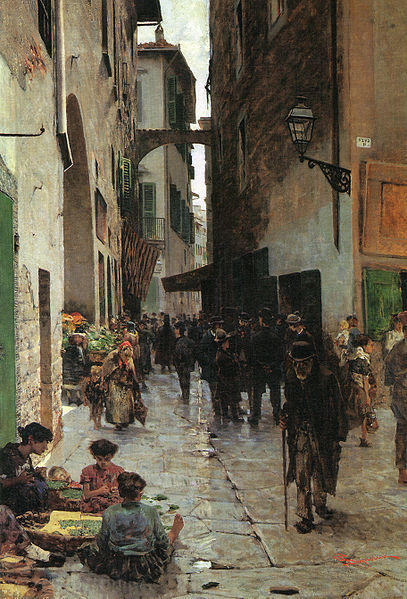Jewish quarter (diaspora)
In the Jewish diaspora, a Jewish quarter is the area of a city traditionally inhabited by Jews. Jewish quarters, like the Jewish ghettos in Europe, were often the outgrowths of segregated ghettos instituted by the surrounding Christian authorities. A Yiddish term for a Jewish quarter or neighborhood is "Di yiddishe gas", or "The Jewish quarter." While in Ladino, they are known as maalé yahudí, meaning "The Jewish quarter".
An 1880 watercolour of the Roman Ghetto by Ettore Roesler Franz.
Prague-Josefov, which was demolished between 1893 and 1913
The Warsaw Ghetto in May 1941
Jewish Quarter of Třebíč, Czech Republic
In the early modern era, European Jews were confined to ghettos and placed under strict regulations as well as restrictions in many European cities. The character of ghettos fluctuated over the centuries. In some cases, they comprised a Jewish quarter, the area of a city traditionally inhabited by Jews. In many instances, ghettos were places of terrible poverty and during periods of population growth, ghettos had narrow streets and small, crowded houses. Residents had their own justice system. Around the ghetto stood walls that, during pogroms, were closed from inside to protect the community, but from the outside during Christmas, Pesach, and Easter Week to prevent the Jews from leaving at those times.
The distribution of the Jews in Central Europe (1881, German). Percentage of local population: 13–18% 9–13% 4–9% 3–4% 2–3% 1–2% 0.3–1% 0.1–0.3% < 0.1%
Frankfurter Judengasse in 1868
Ghetto of Florence, T. Signorini, 1882
An 1880 watercolor of the Roman Ghetto by Ettore Roesler Franz.







